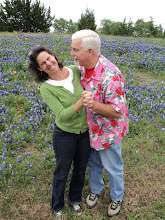Bandera County, and the field of Texas history, lost a good one when Dorothy “Dot” Ferguson Hatfield passed away in late September at her home in Medina.
Probably not many of you know who she was, but over the last two decades she produced a shelf-full of indispensable books—eighteen in all—on the history and people of Medina County. I had never heard of her or her books until our ranch manager Robert Selement generously loaned me his personal copies, signed by the author, when he learned I was researching the history of Madroño Ranch and the surrounding area.
Hatfield’s books, which bear titles such as Medina Memories; Medina: Mecca of the Hills; Magical Medina; and Medina, Glory Land, are compilations of interviews with old-timers, recountings of local legends, and other such ephemera, jumbled together in somewhat random order. They are far from scholarly, lacking an index and, often, any attribution by which to gauge their veracity, but full of lively and otherwise unavailable information—such as the tale of Medina’s last cattle drive, in 1941; or of the impromptu local celebration on November 11, 1918, when the Armistice ending World War I was signed in France; or Ida Hatfield’s account of the 1870 raid in which Indians killed her parents, kidnapped her two brothers, and left eight-year-old Ida for dead after piercing her seven times with lances.
I am sorry to say there was a time, while I was a graduate student at UT Austin, when I looked down my nose at such works. I was working toward a master’s degree in American studies, and while that field seemed somewhat less strictly “academic” than, say, English lit or history, I still believed that no work without footnotes and an index was really worth much. Then, in 1986, the Texas State Historical Association, then headquartered on the UT campus, hired me as a part-time writer and researcher on the New Handbook of Texas project.
The NHOT, as we called it, is a six-volume, 6,000-page reference work published in 1996. (It is now available online as well.) It is a sort of combination historical encyclopedia and biographical dictionary, comprising some 25,000 entries on every county, city, town, river, creek, mountain, battle, personality, and profession in or associated with Texas. The NHOT was the culmination of a 14-year project to revise, expand, and update the original two-volume Handbook of Texas, co-edited by the legendary Walter Prescott Webb and published in 1952. (A single supplementary volume appeared in 1976.)
Over the years I wrote several hundred entries for the NHOT on a dizzying variety of topics, including rock and roller Buddy Holly, football star Bobby Layne, Fredericksburg’s Nimitz Hotel, Western swing pioneer Adolph Hofner, the Dallas Stars hockey team, Star Trek creator Gene Roddenberry, Big Bend Ranch State Park, silent movie star Tom Mix, singing cowgirl Dale Evans, and many others. And while I eventually spent about fifteen years on the TSHA staff in a variety of full-time positions, initially I was just one foot soldier in a veritable army of grad students, independent researchers, and freelance writers working on the NHOT.
Most of us relied primarily on the collection of what was then known as the Eugene C. Barker Texas History Center, now part of UT’s Dolph Briscoe Center for American History. Among the most valuable resources in that collection were works, many of them much like Hatfield’s, by amateur local historians. I quickly developed a profound appreciation of such folk; they were “on the ground,” so to speak, and knew their communities in a way that no professional academic historian could. While some of the stories were almost certainly exaggerated, if not made up out of whole cloth, and while we often wished the books had a more logical organizational structure, much of what they contained was invaluable information that would otherwise have been lost forever.
Once I meandered through Dot Hatfield’s charming and informative books of Medina history, I had been hoping to meet her; Robert, who knew she had been in poor health, kept urging me not to delay. As usual, Robert was right; she died before I had the opportunity to meet her and tell her how much I enjoyed and appreciated her work. There’s no doubt that it will inform and enrich any future blog posts in which we talk about the history of the area.
—Martin
What we’re reading
Heather: Ian Falconer, Olivia Helps with Christmas
Martin: Ian McDonald, Revolution in the Head: The Beatles’ Records and the Sixties


No comments:
Post a Comment